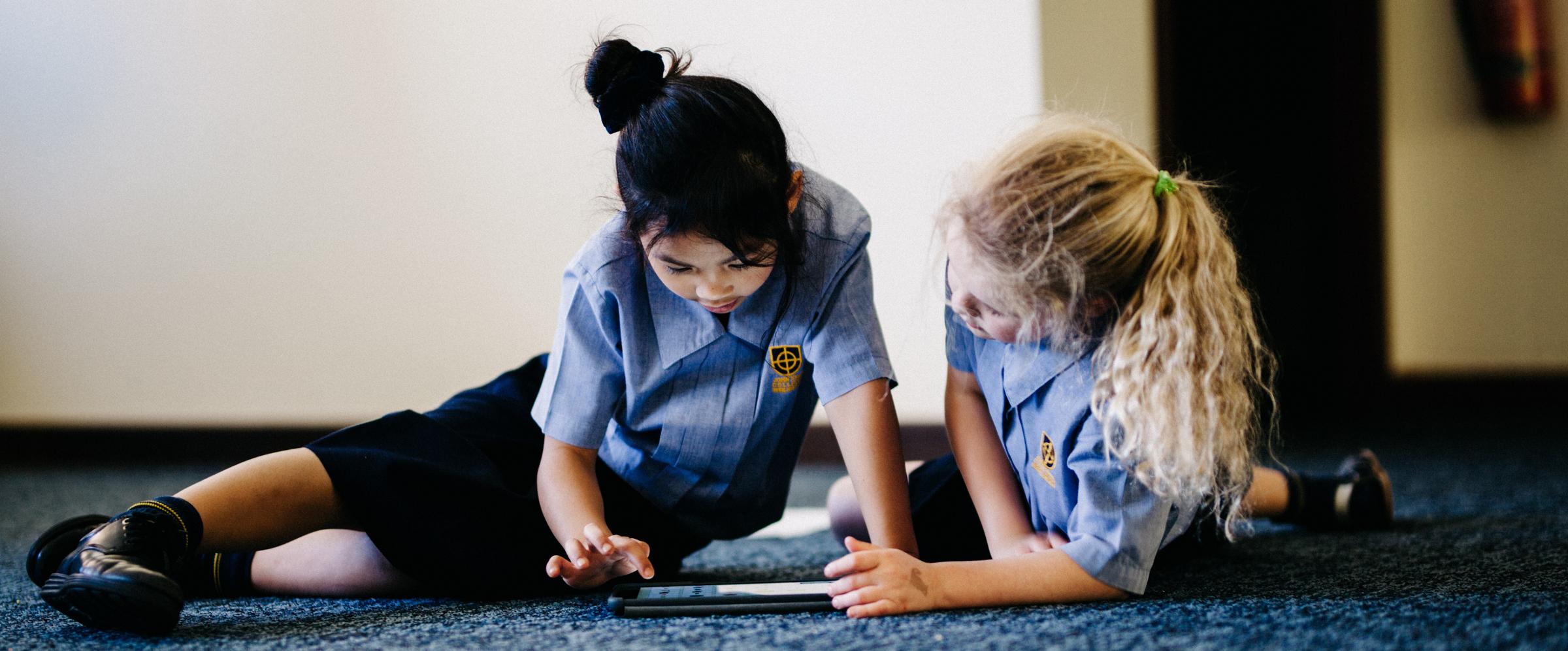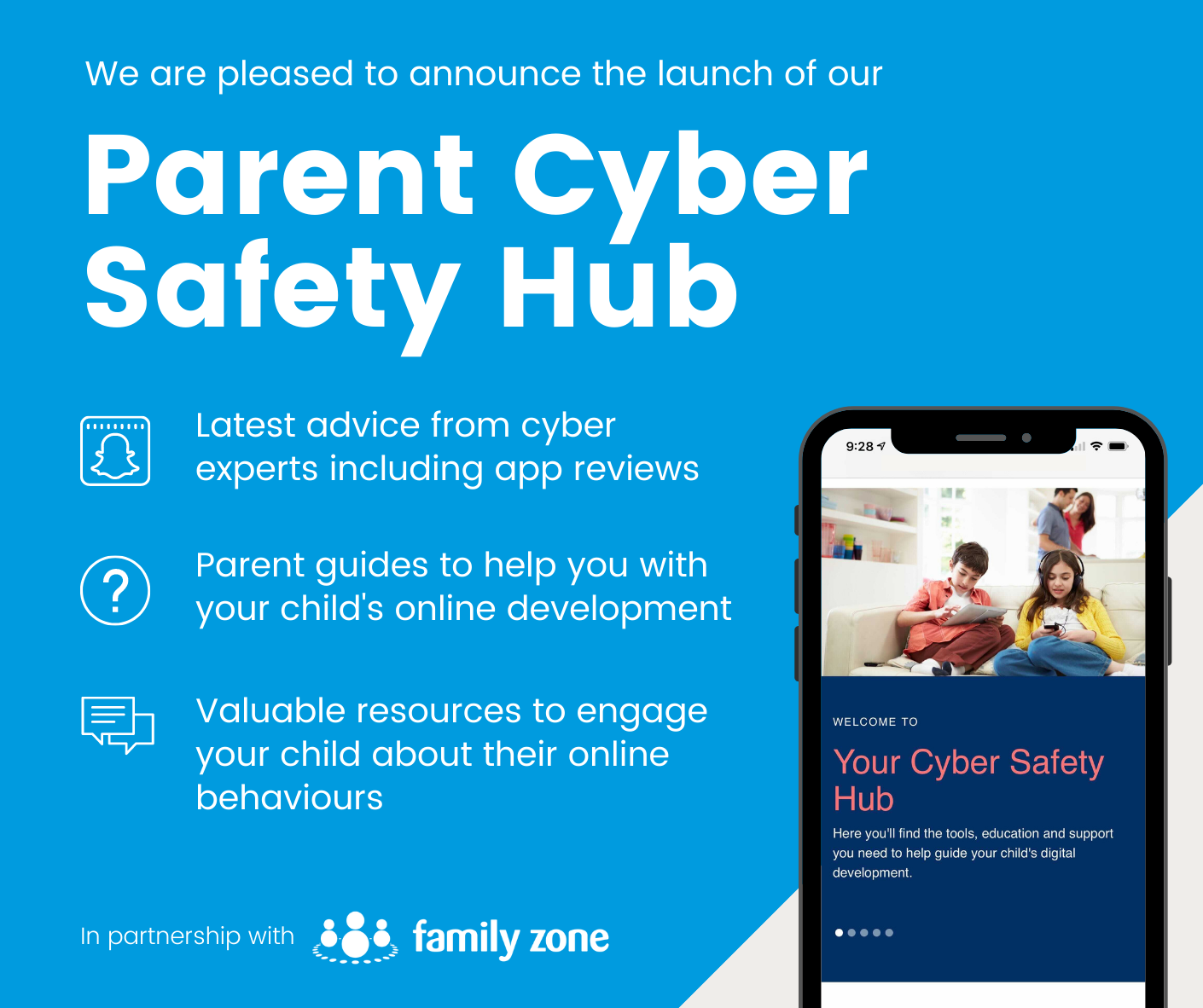Cyber Safety

Introducing our new Cyber Safety Hub
We are delighted to introduce you to a new resource made available to you through our partnership with Family Zone - our new school Cyber Safety Hub.
As you may already be aware, our partnership provides your family with access to the Family Zone tools to use at home with your children if you wish. The purpose of the Cyber Safety Hub is to complement those tools with practical guidance and information to further support you in engaging with your children in their digital development. These tools and resources also allow the school and parent body to work together on creating a holistic approach to guiding each student's online journey.
You can access the Cyber Safety Hub using the link below:
https://johnxxiii.cybersafetyhub.com.au/
About the Parent Cyber Safety Hub
The Cyber Safety Hub includes resources to help your family better understand the different Family Zone tools available to you and how to use them, plus access to regular cyber safety events to help you stay informed about the latest digital trends.
Also, the Cyber Safety Hub provides expert advice from leading cyber experts, ySafe, on the most pertinent issues and frequently asked questions around platforms like TikTok, Fortnite, Instagram, and more. There are app reviews with age and safety recommendations, along with a range of guides to help ensure healthy boundaries around screen-time & gaming, plus step-by-step instructions for using parental controls and filtering out inappropriate content.
We are very excited to be able to offer you this level of expertise and support. We look forward to working closely with you as we develop the cyber safety conversation within our school community.
When too much screen-time is enough to make you sick
Everybody knows too much screen-time is bad for your family’s health. But could it actually be making your kids sick?
Experts say yes - “cybersickness” is a real thing. Learn the symptoms, and what you can do to keep your family grounded.
If you’ve ever been seasick, carsick or felt ill on an amusement park ride, you know the feeling all too well. The queasiness. The disorientation. The headspins.
It happens when your senses - what you see, feel and hear - send conflicting signals to your brain. In a nutshell, your eyes are telling you one thing but your body is telling you another.
Scientists call the effect “visual vestibular conflict.” For a simple but common example, think about reading in a car as a passenger. Your eyes are focused on a stationary object. But the rest of your body perceives movement.
“As a result, this creates a type of confusion where your eyes sense one thing and your inner ear and body detect something else,” explains occupational therapy professor Christina Finn.
Now, think about a video game or a virtual reality experience involving fast-moving imagery and the illusion of nonstop action. It’s exactly the same as reading in a car - only in reverse. In the screen-time version, your body perceives that you are sitting still - but your eyes and therefore your brain experiences extreme movement.
Result: cybersickness, with symptoms exactly the same as those of motion sickness.
Who is most susceptible?
Of course, not everybody will experience cybersickness. But kids (and adults) who become queasy on rides at the show, or during long car or plane trips are especially vulnerable. So is anyone with a history of migraines or concussion. And younger children are especially susceptible.
Common triggers
Experts caution that fast-paced videogames aren’t the only triggers. Cybersickness can strike during extended periods of scrolling, when you use multiple screens simultaneously - or even when you attend a virtual meeting in which another person is controlling the screen.
Symptoms
Symptoms of cybersickness mimic those of motion sickness - with nausea, dizziness and headache topping the list. Eye-strain is an additional marker, as prolonged screen-time causes dryness, irritation and blurred vision.
Other symptoms, according to the medically reviewed online journal Healthline, can include drowsiness, flushing and sweating.
Top tips for prevention
- Reorient. “Remind your eyes that they have a body attached to them,” advises one expert. In other words, just get up and move around more - every 30 minutes if possible. Consider sitting on an exercise ball.
- Avoid using multiple screens. Consider making “monotasking” a family rule.
- Slow your scrolling speed. You can adjust this on your computer’s settings.
- Turn off pop-ups and flashy displays. Use ad blockers and parental controls to keep random visual matter to a minimum.
- Do the 20-20-20-20. Minimise eye strain by taking a visual break from the screen every 20 minutes. Focus on something 20 feet (6 metres) away for a further 20 seconds. And in the last 20 seconds lubricate your eyes by blinking rapidly.
- Minimise blue light exposure. We all know by now that the blue light our screens emit can interfere with sleep. But it can also cause headaches and trigger cybersickness. Prevention could be as easy as activating the built-in blue light filter built into your device. (Check your phone and computer display settings.) Blue light glasses are inexpensive and have been shown to be effective in filtering out these harmful rays.
When in the grip of a bout of cybersickness, switch off screens immediately and take long, deep belly breaths to reduce nausea. In severe cases, over-the-counter motion sickness medication may bring relief.
Reference: https://www.familyzone.com/anz/families/blog/when-screen-time-makes-you-sick


